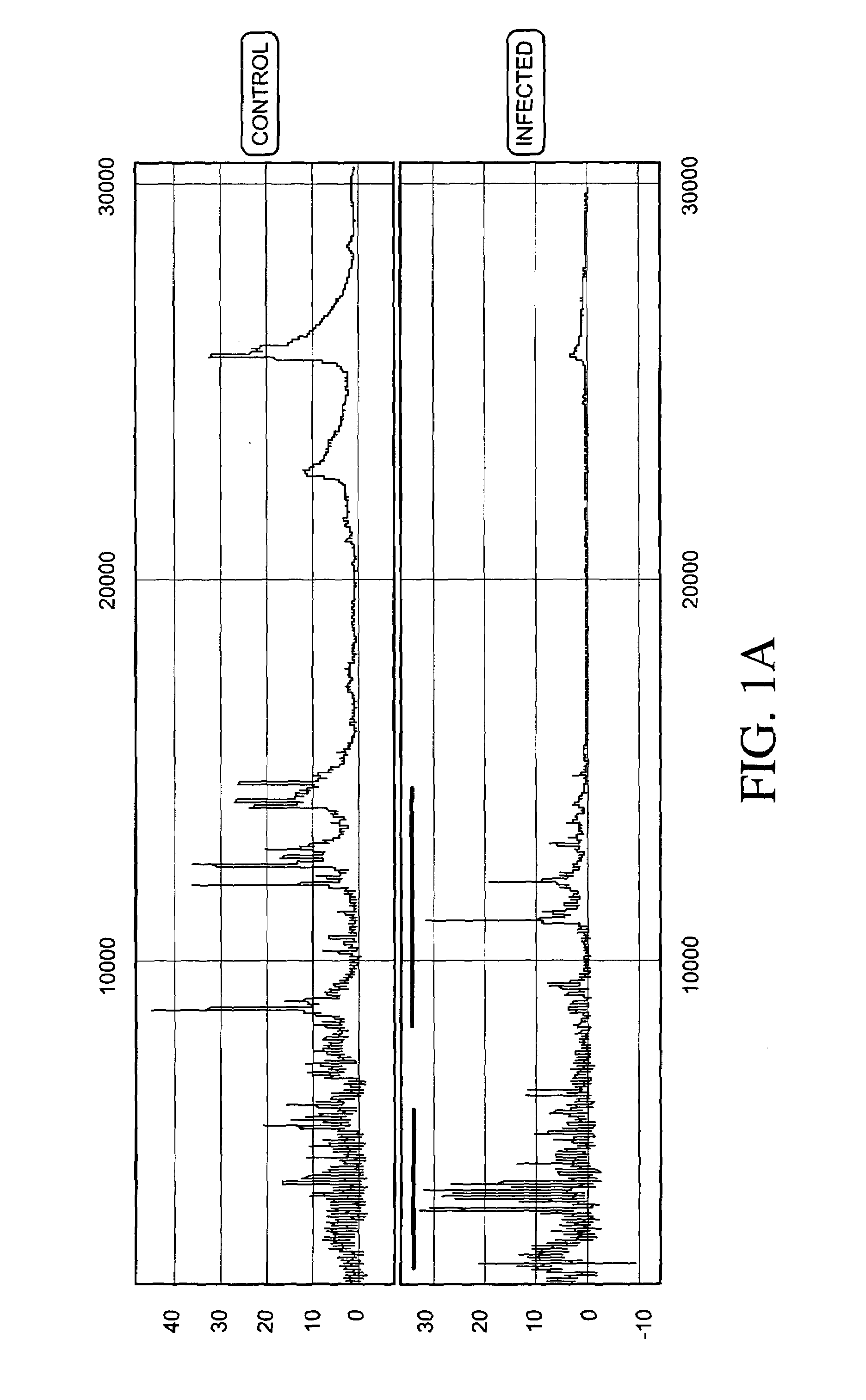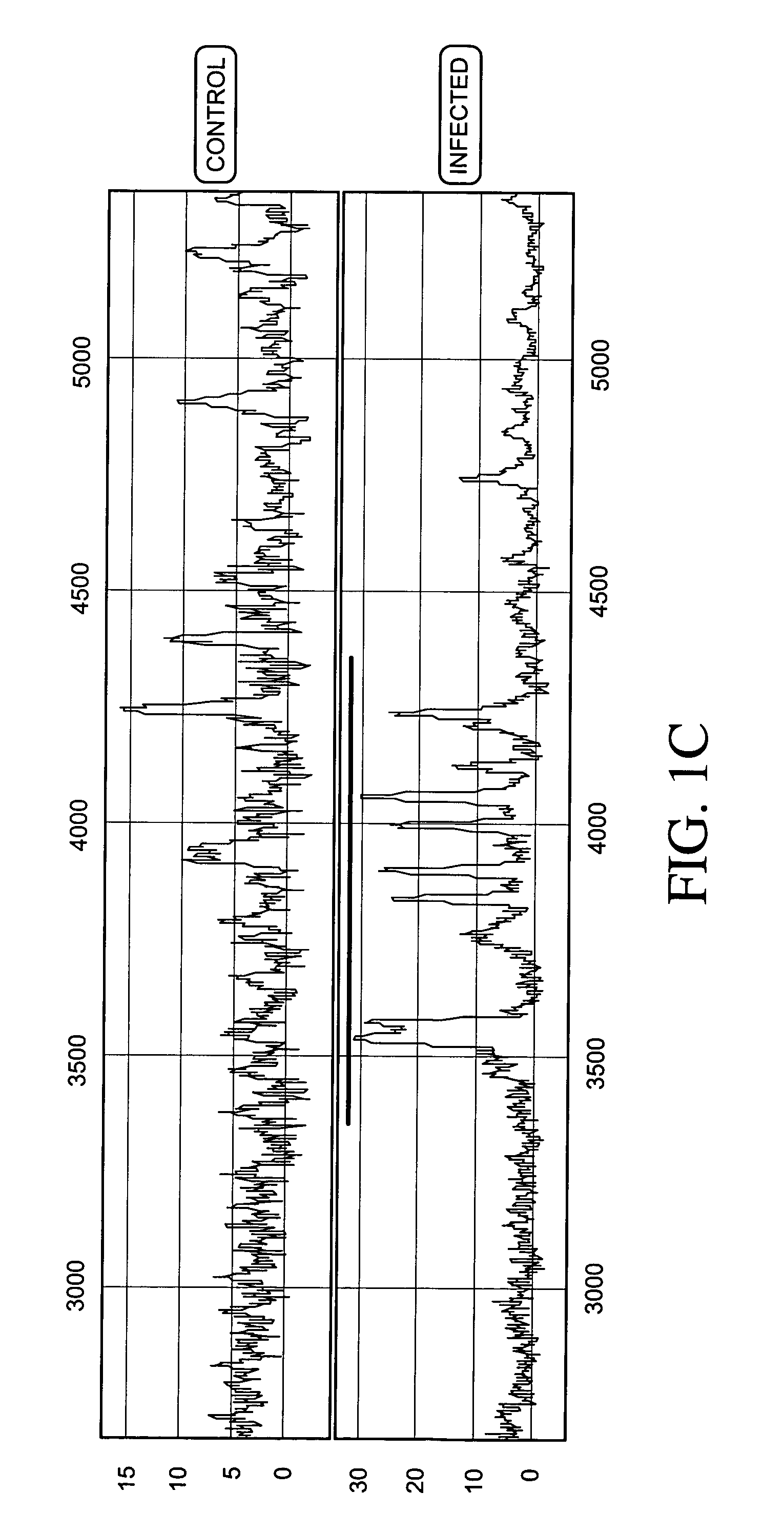Proteomic analysis of biological fluids
a biological fluid and proteome technology, applied in chemical methods analysis, biochemistry apparatus and processes, instruments, etc., can solve the problems of compromising well-being, unable to provide information on the regulation of protein function through post-translational modifications, proteolysis or compartmentalization,
- Summary
- Abstract
- Description
- Claims
- Application Information
AI Technical Summary
Benefits of technology
Problems solved by technology
Method used
Image
Examples
example 1
General Protocols
Primate Model of Intra-amniotic Infection
[0122]This protocol was approved by the Institutional Animal Care Utilization Committee of the Oregon National Primate Research Center, and guidelines for humane care were followed. Three pregnant rhesus monkeys (Macaca mulatta) with timed gestations were chronically catheterized as previously described (Haluska G J, et al., Temporal changes in uterine activity and prostaglandin response to RU 486 in rhesus macaques in late gestation., Am J Obstet Gynecol 157: 1487–95 (1987); and Gravett M G, et al., An experimental model for intramniotic infection and preterm labor in rhesus monkeys. Am J Obstet Gynecol 171: 1660–7 (1994)). Briefly, at approximately day 110 of gestation (term is 167 days) pregnant animals were conditioned to a jacket and tether system (Ducssay C A, et al., Simplified vest and tether system for maintenance of chronically catheterized pregnant rhesus monkeys. Lab. Anim Sci 38:343–4 (1988)). After conditioning,...
example 2
Identification of Proteins and Polypeptides Expressed in the Amniotic Fluid
[0147]Using the materials and methods described in Example 1, proteins and polypeptides expressed in normal and infected amniotic fluid were identified. Human and primate amniotic fluid samples (pooled and individual) were subjected to protein separation techniques (1-D, 2-D and HPLC fractionation) as described in Example 1. The separated proteins (gel bands, spots and fractions) were digested with trypsin to generate peptide pools. The peptide pools were analyzed using tandem MS to decipher their amino acid sequence and composition.
[0148]Five thousand MS spectra were selected using spectral verification programs. These spectral files were analyzed using de novo sequencing programs (LUTEFISK™, PEAKS™) to generate the amino acid sequence corresponding to each peptide. The de novo sequences generated from the peptide pool were used to search protein and DNA databases as described in Example 1.
[0149]Using homolo...
example 3
Protein Expression Profiles of Primate Amniotic Fluid Following Intrauterine Infection
[0168]Protein expression profiles of primate amniotic fluid following intrauterine infection, compared with the corresponding normal expression profiles, are shown in FIGS. 1A–C.
[0169]As illustrated in FIGS. 1A–C, the global protein expression profiles of control and infected amniotic fluid are distinct. A detailed spectra of amniotic fluid profiles in a smaller mass range (FIGS. 1B and 1C), shows distinct and characteristic differences between the protein expression profiles of control and infected samples approximately in the 3–5 KDa and 10–12 KDa range. This illustrates global regulation of protein expression in response to intrauterine infection and the ability to detect a unique expression signature diagnostic of intrauterine infection.
PUM
| Property | Measurement | Unit |
|---|---|---|
| molecular weight | aaaaa | aaaaa |
| concentration | aaaaa | aaaaa |
| concentration | aaaaa | aaaaa |
Abstract
Description
Claims
Application Information
 Login to View More
Login to View More - R&D
- Intellectual Property
- Life Sciences
- Materials
- Tech Scout
- Unparalleled Data Quality
- Higher Quality Content
- 60% Fewer Hallucinations
Browse by: Latest US Patents, China's latest patents, Technical Efficacy Thesaurus, Application Domain, Technology Topic, Popular Technical Reports.
© 2025 PatSnap. All rights reserved.Legal|Privacy policy|Modern Slavery Act Transparency Statement|Sitemap|About US| Contact US: help@patsnap.com



